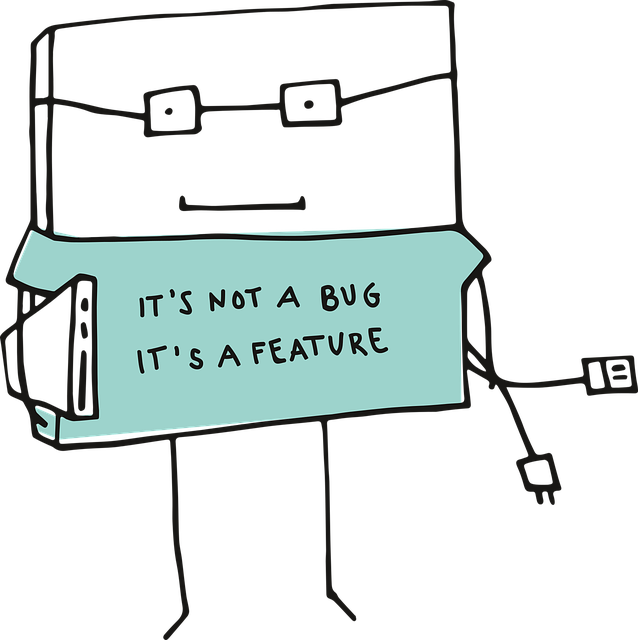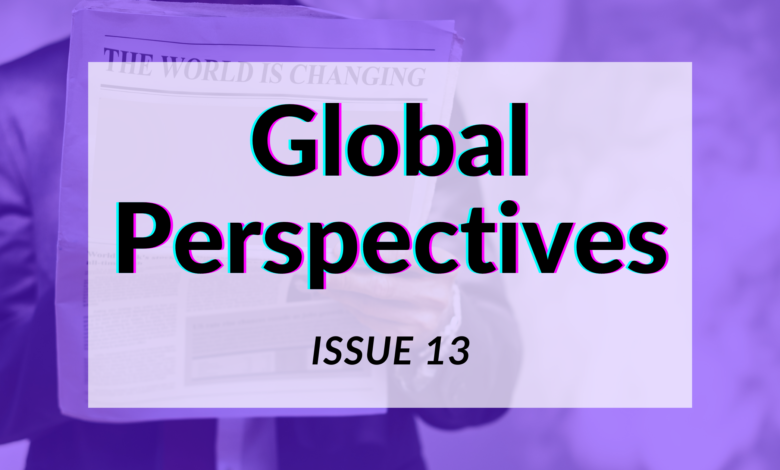This month we feature Gartner's prediction for the metaverse and what it means for marketers, consider the role that shapes play in conveying feelings and ideas, and explore the importance of humility and empathy in marketing.
Global Perspectives brings you the latest thought-provoking ideas, real-life case studies and sharpest insights to help you become a better marketer.
Rise of the metaverse
 Meta (Facebook) and Microsoft are among the tech behemoths looking to lead the world’s population into the limitless possibility of virtual. Scary or exciting? Does innovation always equate to progress? These are big questions for bigger brains to answer. We’ll place the existentialism to one side…
Meta (Facebook) and Microsoft are among the tech behemoths looking to lead the world’s population into the limitless possibility of virtual. Scary or exciting? Does innovation always equate to progress? These are big questions for bigger brains to answer. We’ll place the existentialism to one side…
According to Gartner, 25% of people will spend at least one hour a day in the metaverse to work, shop, attend school, consume entertainment or socialise by 2026. No wonder investors are jostling to find the leading app for the metaverse, the latest being 3D social network ‘BUD’ which recently raised $15m funding.
With all these fast-moving developments, it’s important for marketing leaders to get a grasp of what opportunities or pitfalls may lie ahead. While it’s not quite time to dive head-first in (Gartner warns that the adoption of metaverse technologies is early and disconnected), it’s a good time to learn.
Some of the key characteristics of the metaverse include:
• Always running: The metaverse does not pause when you leave. It continues to evolve while you’re away.
• Real-time: It’s synchronised with physical world time.
• Fully functioning universe: Users can create, sell, buy and own. Plus rewards can be earned for work performed within the metaverse.
• User generated content: Users don’t just interact with the world around them, they can build it too.
There are potentially limitless use cases for marketers: online events can be more immersive, brands can better showcase their products or services (e.g. hotels showcasing their rooms within fully interactive 3D experiences), virtual venues can be created which attract passers-by in this other world and much more.
In short: the metaverse will run in parallel and in combination with the physical world.
The mind boggles.
Key lessons for marketers:
- Do you know how the metaverse could impact your company and, therefore, its marketing? If not, now’s a good time to learn and be ready to adopt at the right time. It’s time to pour a coffee and get reading…
- While it may be tempting to put the metaverse on the backburner, it’s worth recalling the OT of SWOT. What are the possible opportunities or threats presented by the metaverse?
- Dip a toe in the (digital) water. Rather than invest too heavily, the early stages of any major new technological evolution is a time to experiment for most businesses. So, play around, understand how it functions, develop best practice and further realise where the opportunities and threats may lie.
International Campaign Highlight – Greenpeace

Country: Netherlands
Agency: Ogilvy Social Lab
Campaign: “Plastic is back”
Greenpeace have launched a campaign which aims to increase awareness of the longevity of single-use plastics. Crisp packets, bleach bottles and yoghurt pots are among the many household items which populate our oceans and wash up on our beaches.
How best to get the message across and represent the scale of the problem without eliciting the reaction: ‘Enough already!’? The bright minds at Ogilvy came up with a great idea: turn these old discarded products into a retro webstore and exhibition.

It works on a variety of levels. First, it showcases all the washed up items, thereby portraying the issue of plastic pollution. But real interest comes from seeing old product designs and brand names from around the world. It makes for grimly fascinating viewing.
(For marketers, it’s also a reminder that the products we work on can end up as pollution.)
By clicking on one of the individual ‘retro products’ you are taken to a donation page which tells the visitor more about the product and the wider plastic problem, with a donation form adjacent.
To accompany the campaign, Ogilvy created an exhibition, along with a billboard and video campaign.
Key lessons for marketers:
- One of the classic marketing practices is to highlight the customer problem and showcase how your product or service is going to solve it. But is there a way you can illuminate the problem in more visually creative ways? If so, this could make for a more powerful and persuasive marketing campaign.
- Related to the above, can you create artistic value out of the problem you’re trying to address? Brainstorm in the most absurd way possible and who knows what you’ll find.
Related reading:
Want to feed your grey matter with great ideas from around the globe? Sign up to our newsletter.
What’s in a shape?
 A recent study found that people will almost always a prefer a round-shaped food product. There’s an evolutionary reason behind this: round-shapes represent comfort and warmth (think soft surfaces and the heat of the sun), as opposed to sharp edges which represent danger (think jagged rocks and sharp teeth).
A recent study found that people will almost always a prefer a round-shaped food product. There’s an evolutionary reason behind this: round-shapes represent comfort and warmth (think soft surfaces and the heat of the sun), as opposed to sharp edges which represent danger (think jagged rocks and sharp teeth).
It’s not true in all food buyers – those who are predominantly motivated towards achieving greater health and wellbeing will likely have a more pragmatic mindset. But those who have a lower health motivation and higher desire for enjoyment, will almost always opt for the rounded product.
The hedonists!
Of course, shapes have an important role to play in all forms of marketing and not just food product design. Michael Evamy recently published a revised version of his book ‘Logo’ which explores the rise in desire for truth and authenticity amongst consumers. This has led to a trend for simpler and more direct logo design which eschews grandiose visuals in favour of a “pre-digital flatness” – to best communicates these values.
Here’s a quick overview of the different values displayed by different shapes, abbreviated from this handy guide by fabrikbrands.com:
- Circles: conjures a more welcoming vibe as above, but also connects with the idea of unity and commitment and, by extension, strength and sturdiness.
- Squares: used to depict professionalism, balance and proportion – essential ingredients of trust.
- Triangles: rarely used but a good way of depicting drive, continuous motion/improvement, a sense of hierarchy.
- Lines: vertical lines represent strength and sophistication while horizontal lines evoke a sense of calm and tranquillity.
- Organic shapes and spirals: often used to express a feeling of expansion, birth, fertility and transformation.
Key takeaways for marketers:
- Do your logos and designs reflect the values of the company? If not, it may be worth raising the issue – or at the very least being mindful of it ahead of a new campaign.
- Is the intention of your words being reinforced by the associated imagery? While we’ve raised the issue of shapes, we haven’t touched on the importance of colour (see link below). This emphasises the need for wordsmiths and graphic designers to work together from the inception of a project.
- Marketing is a multi-faceted discipline which benefits from an understanding of the psychological impact of both words and imagery and the connection between the two.
Related reading:
> The psychology of colour – Hubspot
> The psychology of logo shapes – Fabric Brands
> A decade in logo design, what’s changed? – Creative Review
Humility in design
 Seth Godin, deliverer of bite-sized wisdom, recently wrote about the importance of empathy in writing and designing instructions. Because here’s the problem: when someone’s an expert (or near enough), it’s hard for them to wear the shoes of a customer who knows little or nothing.
Seth Godin, deliverer of bite-sized wisdom, recently wrote about the importance of empathy in writing and designing instructions. Because here’s the problem: when someone’s an expert (or near enough), it’s hard for them to wear the shoes of a customer who knows little or nothing.
It’s why great footballers rarely make great coaches: excellence is so long ingrained it’s a natural part of their being. It’s hard for them to empathise with a less able player who struggles to develop the skills or mindset they found simple. “Why can’t they just do it!”
But it’s true in the business world too. How does an accountant relay their knowledge to a lay person without drifting into industry jargon? How do you write instruction manuals that are easy to follow for everyone, when you created the product in the first place?
Seth Godin summarises thus:
“Acknowledge that communicating what you know is difficult”
“Find empathy for people who don’t know what you know yet”
“Test the work often”
This, of course, is the job of the marketer. It’s up to us to translate expertise into meaning. Be the eyes and ears of the dumb customer, and speak with their voice. That means being honest with the expert and laying bare your own ignorance. A marketer who pretends to know is never going to know. They will remain the dumb marketer, serving the dumb customer.
And so an idiot leads the stupid!
Key takeaways:
- Marketers must be the conduit between the expert and the customer when writing guidance and instruction.
- Develop empathy for the uninformed customer and serve them with the appropriate information in the appropriate manner. Empower!
- Humility is an important characteristic for any marketer. If you don’t know something, don’t pretend to have the answer. As a marketing leader, ensure your people feel able to ask the stupidest questions without fear of admonishment. Is it time for an ignorance amnesty?
- In short: be proud of taking on the role of the ‘idiot’ customer when speaking to the tech guru, psychologist or other industry expert. Be willing to feel stupid so the customer doesn’t have to. End result? Better marketing. (So, not so stupid after all.)
Further reading:
> It’s easy to do if you know how to do it – Seth Godin
> Humility in Design – Lullabot
Thanks for reading! Sign up to our fortnightly newsletter for more great ideas and marketing inspiration.









Leave your thoughts